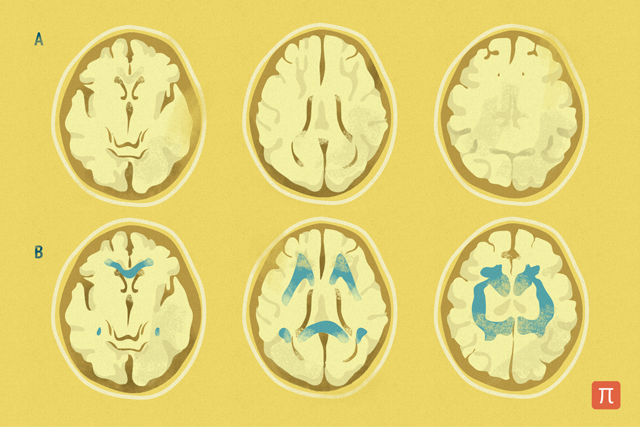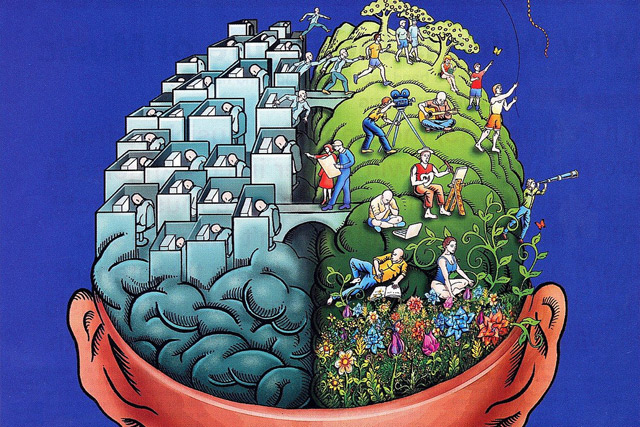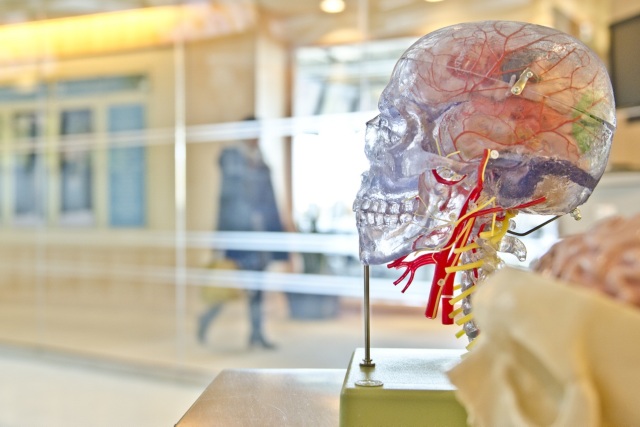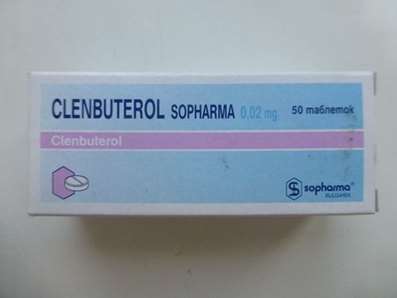02 Nov 2016
New methods of disease diagnosis
"Individual monitoring using microarrays could lead to a revolutionary breakthrough in the diagnosis and treatment"
In medical diagnosis involves understanding a set of rules, methods, decisions that will ultimately allow to come to a conclusion about the presence or probability of the presence of a disease.

Functional diagnostics is a specific and fairly well-defined division of medical diagnostics. Assessing the prospects and development of functional diagnostics in recent years, it should be noted that there are skeptics and optimists. Skeptics say that as the basis for functional diagnostics is clinical physiology, that is, an analysis of regulatory processes that occur in the human body and indicating the presence of the disease, and she clinical physiology in recent years has not undergone major changes, and functional diagnostics is currently underway stabilization phase without waiting for revolutionary breakthroughs.
Optimists argue quite the opposite. They say that the accumulation of technological innovation and the data obtained in recent years, leading to qualitative and quantitative changes, which open up new horizons in the field.
There is no doubt that with the development of modern technology we are able to identify all the earlier regulation changes associated with the disease. But I would like to draw attention not to quantitative and qualitative trends in the functional diagnosis. Traditionally, the subject of the study were the processes in the body, occurring either in a state of relative rest or with artificially created "significant" load, that is, in fact it was "provocative" functional diagnostics. The first successful attempt to go to the "observation" functional diagnosis can be considered in the creation of the 60-ies of XX century equipment for the continuous monitoring of ECG (Holter AN) and blood pressure (A. Ninman) in a "real life activity."
It took 50 years of distrust, skepticism, pessimism, and improve recognition, and these methods have become indispensable in the detection and treatment of disorders of rhythm and conduction of the heart and arterial hypertension. Now we understand that that hypertension, which traditionally was detected at the doctor - it is only 40-60% of the "iceberg" real hypertension. Part of it was a false hypertension - "white coat hypertension". A very disturbing nocturnal hypertension, and hypertension, which occurs only in the workplace, has become available for the detection and correction only when using modern devices that automatically measure the pressure every 15-30 minutes.
Moreover, the equipment is already in the form of bracelets for every second of BP control in a "real emotional and physical" stress. In 2014 in the United States for the first time allowed for clinical use in implantable pulmonary artery system for continuous measurement and transfer to the center of the observation data on the pressure in the pulmonary circulation in the "home". This technological breakthrough has led to tangible results when observing and treating patients with low cardiac output. Great efforts in the creation of implantable devices allowing all monitored parameters over a wide range of cardiovascular system, marked by the firms producing implantable pacemakers.
Practically we can say that "the genie out of the bottle" and we stand on the threshold of creating a "Monitoring of functional diagnostics" on the basis of implantable microchips. The optimists dream of a secure microchips, which will be "a warning" be implanted, and a man working for a long time to collect the necessary information that will identify the earliest adverse functional changes. That is, functional diagnostics will focus on the identification and correction of prior disease. This trend - individual monitoring using microchips - can lead to a revolutionary breakthrough in the diagnosis and treatment.
"Decision-making in the diagnosis rests with the man, but assistance provided by technology, it is important"
Recently there has been not only the emergence of new methods of diagnosis, but also, surprisingly, the revival of the methods that have recently seemed obsolete. Moreover, these approaches take on a very different role in the diagnosis, than it was before.
As one example, we can mention the introduction of new methods of microscopic analysis. Reducing the role and relevance of these methods it is determined by a small precision microscopic methods, but more high cost. A blood smear is expensive, automatic analyzer analyzes faster and cheaper. Implementation of an automated sample preparation systems, automatic photographic products, the development of decision support systems, and much more made of microscopic methods and more accurate, and less expensive. Already installed in some clinics robotic systems that can automatically produce photographs of a large number of drugs. The role of the diagnostician is reduced to the analysis of the images obtained. The next image recognition system. It is clear that the decision is up to the person, but the assistance provided by technology, becomes significant.
Plus new microscopy techniques gradually from research laboratories are moving to the clinic. It is not only new equipment, but new experimental approaches. We are talking primarily about the systems associated with the use of fluorescent proteins, which have long been used for research purposes, or in screening systems. Last fairly quickly develops into diagnostic applications.
Another interesting example - the development of flow cytometry methods. This method analyzes the presence of certain proteins on the cell surface, which is very important, for example, for the differential diagnosis of leukemia and lymphoma. Tumor cells differ quite specific set of proteins on their surface, revealing that, you can make a diagnosis. The problem is that it is necessary to identify a lot of the markers. Earlier, at the same time it was possible to identify two, rarely more markers. If a lot, there is no problem of tumor cells. But if the tumor cells is small, they recognize numerous among normal almost impossible. Now implemented approaches that simultaneously identifies eight markers. Part of them are used to identify a population of tumor, and the part - for the characteristic properties of tumor cells.
"Analysis of the survey data allows in practice to implement the principle of personalized medicine"
Over the past two decades we have undergone a radical renewal of the methods of quantitative and qualitative analysis of the molecular basis of life. From the detection of certain types of molecules in the fundamental and applied biomedical science irrevocably shifted to the detection of whole classes of molecules in their total or almost total population.
Such methods have total -omics name, generic name of branches of science, ends with the suffix "-omics". For example, genomics studies the genes ensembles, ie genomes. Transcriptomics - ensembles mRNA, ie transcriptome. Proteomics - ensembles of proteins, ie proteomes. Metabolomics - ensembles of metabolic reactions, that is, metabolome, and so on.
Using multiple omics technology has made possible the old dream of Medicine of antiquity, breathed new life into the clinical paradigm, formulated even Galen and Avicenna: "Treat the patient, not the disease."
Analysis of the results of different surveys allows omics finally actually implement the above-mentioned principle of personalized medicine and prescribe a particular patient is the treatment that is most suitable to him.
Nevertheless analyze "raw" results of each of omicsn research for personalized medicine purposes is very difficult because of the large amounts of poorly structured data, which represent the "raw" data.
To help in the processing of "raw" data come powerful mathematical and statistical methods are available to the bioinformatics. One of the main tracks deep synthesis and analysis omiksnyh data is the transition from a description in terms of individual molecules (protein, RNA, DNA, etc.) to more general characteristics describing the signaling pathway, that is a complex set of interacting genes and their products (proteins) which determines the metabolic fate and mitotic cells.
As a set of signaling pathways called signalomom, the approach of examining changes in these ways can be called signalomics. Due to the law of large numbers (as the signaling pathways contain hundreds of genes and gene products) at the level of signalomnom manage to overcome a significant part of the stochastic noise, which greatly complicates the analysis of systemic changes at the genomic / transcriptomic / proteomic level. Correlating the results of various genomic / transcriptomic / proteomic research signalomnom level, as a rule, is also higher than at the genomic / transcriptomic / proteomic.
It is at signalomnom level can not find an effective marker-predictors individual effectiveness of many drugs, such as anticancer, as well as to solve more ambitious than personalized medicine, the problem - "re-profiling of drugs» (drug repurposing), ie search for those diseases in which can various medications to be effective, previously created for treating other diseases. This conversion is made possible by the accumulation in the public domain the results of millions of genomic / transcriptomic / proteomic / metabolomnyh and so on research in various pathological conditions.
It is well-known that Meldonium is excellent for heart, as well as Cogitum for Brains.
"To carry out a genetic analysis of the genome sequenced, and understand what you will have the disease - this naive dream, unfortunately, not been realized"
It is very difficult to say in general for all the diseases at once, which is needed diagnostic methods. The first is to separate the genetic from nongenetic diseases. If we talk about autoimmune diseases, then they need to pay attention to the antibodies. Some diseases require imaging techniques such as magnetic resonance imaging or positron emission tomography. Speaking of neuropsychiatric diseases, in which only in rare cases there is a certain genetic basis, which has been well studied and where genetic diagnosis helps.
To conduct genetic analysis, sequenced the genome and understand what you will have the disease - this naive dream, unfortunately, was not realized. It turned out that we all have quite a large number of nucleotide polymorphisms, and when you, for example, get an analysis of the entire genome, you will have a lot of genetic changes, and will not understand how you can just tie this particular mutation in this gene is a and that the disease symptom. So in most cases, it is a traditional descriptive diagnosis, when the patient comes to the doctor and describe their problems, because, unfortunately, no clear markers, for example, schizophrenia does not exist, and psychiatrists have to investigate symptoms.
If some other diseases can more clearly see what is called a biomarker, when you something measure and can accurately understand: if a person, for example, found in the blood some substance, then he has some disease. The best example is phenylketonuria, which is determined by the phenylalanine concentration in the blood. Doctors dream of finding these biomarkers for many other diseases, but common diseases such biomarkers are rare. And for the majority of diseases mental plan of how to be sad as it may sound, these markers there is little, so the patient is still going to the doctor and complains of their symptoms, and the doctor examines it and sees a manifestation of the classic symptoms, or, as is now fashionable to say, endophenotypes, and it makes the diagnosis.
In neurodegenerative diseases, neuroimaging techniques are informative: for example, in Parkinson's disease in the late stages with the help of positron emission tomography can fix the loss of dopamine neurons, but in the early stages it is impossible, and in fact the most important thing - is to diagnose the problem in humans until the full development of the disease! So, what I am saying applies primarily to neurodegenerative and psychiatric diseases, which I do. In cardiology, oncology and immunology, for example, has a very successful diagnostic methods. Unfortunately, the plan neuropsychiatric diseases the situation is completely different, because when something can be detected, is often already too late. This is a very big problem: how to diagnose the disease at an early stage, when you can still stop the neurodegenerative process?
"The methods of early diagnosis of diseases of the brain to develop a much more difficult compared to other diseases, because no one really knows how the brain works"
If we, for example, the treatment of cancer, the most effective means to combat them is surgery. Therefore, the earlier a tumor is diagnosed, the sooner a cancer can be cured.
At the moment, an effective method of finding tumors is computed tomography. If physicists can develop better imaging - higher resolution and ability to detect tumor cells - it will be the most promising method of detecting tumors at an early stage.
Of course, the development of early diagnostic methods often lead to new methods of treatment of the disease. But if the early diagnosis of diabetes or cardiovascular disease prevention really allows the development of these diseases, the harder the brain. It is much harder to develop treatments for diseases of the brain, because no one really knows how the brain works.
Take a common Alzheimer's and Parkinson's. They are considered a disease of older people, but in fact they have become ill between the ages of 20 to 40 years. Now they are diagnosed only when the brain destruction reached the point that symptoms.
Let's say you 25 years. Imagine that there is a diagnostic method that allows you with a 100 percent chance to say that if you will live, say, 70 years, then you will develop Alzheimer's. But what is the meaning of such diagnostic methods, if the treatment of this disease still does not?
In general, there are two promising areas: the improvement of devices based on physical principles - the same imagers, as well as improved chemical methods of diagnosis based on the presence in the blood of biological molecules - markers of early stages of the disease.


 Cart
Cart





